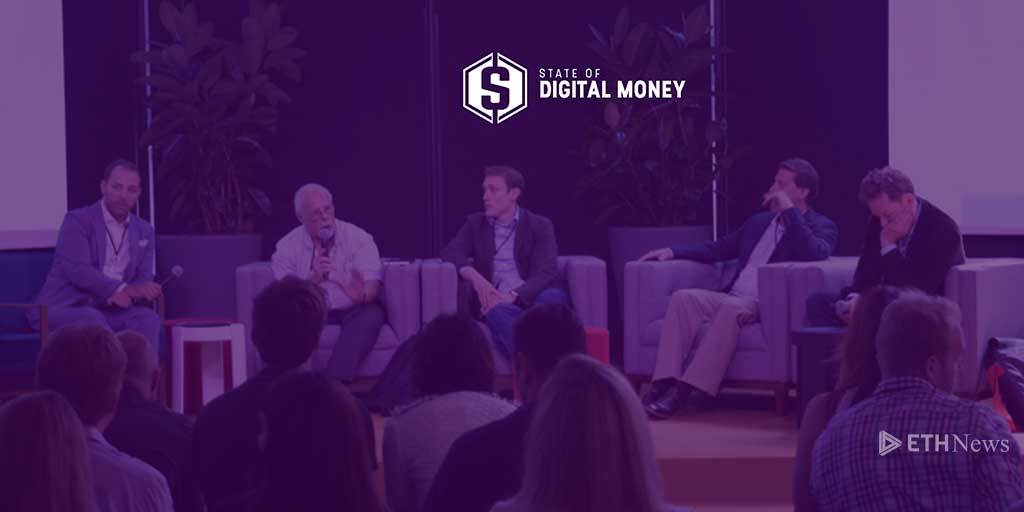State of Digital Money 2017: Recap
Professionals with interests in emerging technologies and evolving trends that disrupt the global financial system gathered together over the weekend in Los Angeles for the State of Digital Money conference.
Los Angeles is sometimes regarded as a lesser city when it comes to technological innovation. In California, the comparisons between San Francisco’s indomitable “silicon valley” and Los Angeles’ much smaller “silicon beach” can occasionally be the punchline of jokes. However, Los Angeles is slowly building the capacity to become a global center for innovators and entrepreneurs, as the city draws upon its considerable resources to embrace the technological challenges and opportunities of the fourth industrial revolution. To that end, downtown Los Angeles was the venue for the State of Digital Money 2017 conference over the weekend. The all-day event, hosted by Cureativ, took place on July 22 and brought together a diverse spectrum of people interested in the future of cryptocurrencies, digital money, and financial technology. Presenters from as far away as Israel and South Korea were in attendance and helped give the conference an international flavor. The day revolved around a series of presentations and expert panels where the future of digital money was discussed.
The conference started with a lull when it was revealed that keynote speaker Brock Pierce would not be able to attend, however William Quigley was able to fill in and gave an inspiring speech that got the day off to a great, albeit impromptu, start. Quigley surmised the basic state of digital money by beginning his speech with a sobering statistic. Despite a $100 billion market capitalization across all cryptocurrencies, only about 27 million people globally have digital wallets holding cryptos. Quigley surveyed the room and began to drive his point home in a deep slow voice. “Of those 27 million wallets, how many wallets are used? By used, I mean accessed once a week. It’s about three million. Seven billion worldwide consumers, three million people using wallets.” This powerful statistic galvanized the audience into understanding that, while the digital money revolution has a lot to be proud of, it’s hardly even begun.
The audience (who wore a clash of Hawaiian shirts, fitted suits, stiletto heels, jeans, and sneakers) stayed in their seats after the opening keynote to hear one of the day’s most anticipated panels debate the regulatory landscape that is evolving alongside FinTech: digital payments and cryptocurrencies. From there, the rest of the day was a whirlwind of presentations, demonstrations, and networking. While every presentation had valuable information to share and people interested to hear it, the sheer size of the audience at any given talk was the best barometer for what the ecosystem felt was most important. A notable example of this was how many people were drawn to the Bitcoin scaling panel moderated by Rob Mitchell. This panel drew on the expertise of Eric Lombrozo, Paul Puey, Ryan Charles and Tone Vays to frame what’s become one of the hottest topics in the cryptospace: scaling blockchains.
A number of use cases for Ethereum were also highlighted. A team from Matryx took a significant share of the spotlight for the debut of its take on virtual reality applications. The entire team was comprised of very friendly mathematicians, and its main attraction was an amazing tool that allowed the user to hold a strand of DNA in their hand, then allowed them to expand it and step inside of it, akin to learning organic chemistry in Tony Stark’s basement. Additionally, Matryx debuted a custom built vector calculus tool to learn the subject in VR.
The ties.network project was also showcased and made a compelling argument for why the explosive growth of the cryptopspace over the last year makes now the right time to create a professional crypto-community social network in the style of LinkedIn.
All in all it was a day of learning and sharing where the common folk of crypto could hear from some of the biggest names in the industry and rub shoulders with those willing to mingle, which was nearly every speaker there. Prior to this year’s event, the State of Digital Money 2015 was also held in Los Angeles. Simply by comparing these two events, it’s evident how significant digital money has become, how far it’s come, and what promise it has for the future. One can only imagine how much change is coming in the next two years.

Hi! I am a robot. I just upvoted you! I found similar content that readers might be interested in:
https://www.ethnews.com/state-of-digital-money-2017-recap